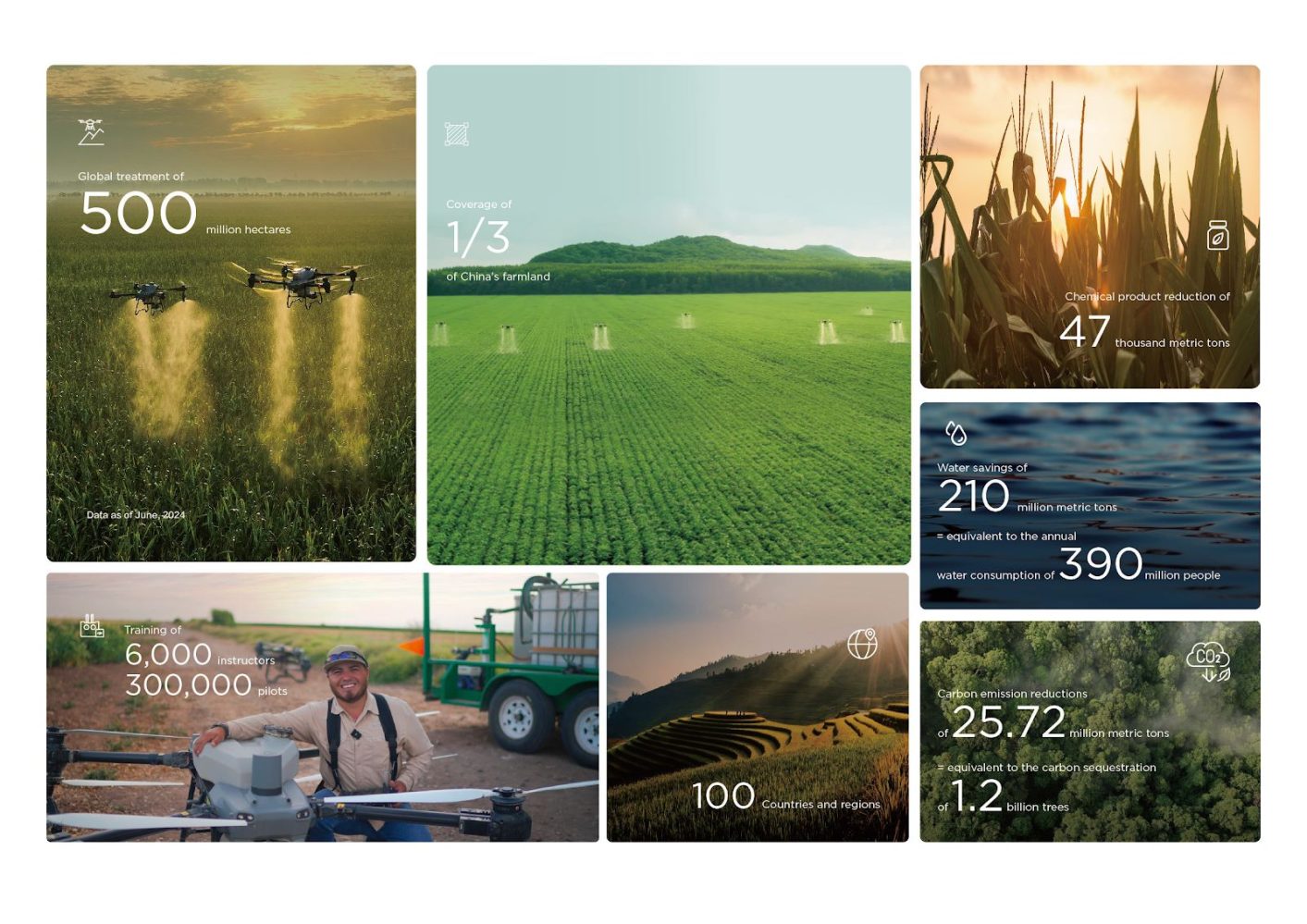
DJI Agriculture has released its latest annual report, shedding light on the remarkable growth and impact of farming drones across the planet. By the end of 2023, over 300,000 agricultural drones were in use in more than 100 countries and regions. As of June 2024, these drones have treated over 500 million hectares of farmland, saving vast amounts of water, reducing chemical usage, and significantly cutting carbon emissions.
According to DJI Agriculture’s 2023/24 report, the global adoption of agricultural drones has soared, with governments increasingly recognizing their potential. Several nations have liberalized their regulations in the last year to facilitate the use of agricultural drones.
Brazil, for instance, eliminated mandatory airworthiness requirements for agricultural drones, streamlining the registration and licensing process. This regulatory shift has made drone operations more accessible to farmers, boosting productivity and efficiency.
In North America, both the United States and Canada adjusted their policies to accommodate the growing use of drones in agriculture. The Federal Aviation Administration (FAA) has granted exemptions for several DJI Agras models (below), allowing them to be used for farmland spraying. Similarly, in Canada, many operators were able to obtain licenses for agri-drone operations using Special Flight Operations Certificates (SFOCs).

Europe has also embraced agricultural drones, with the European Aviation Safety Agency (EASA) releasing predefined risk assessments (PDRAs) for agricultural drone operations. These assessments facilitate the application process for various agricultural scenarios, further integrating drones into the agricultural landscape.
Read more: Save $400 on DJI’s best portable power station
Technological innovations and applications of farming drones
The report also highlights technological advancements that have contributed to the growth of the agricultural drone industry. The integration of artificial intelligence (Al) has allowed for more precise and efficient data processing and decision-making. Furthermore, developments in sensor technology have improved capabilities in precision agriculture. These advancements have not only increased efficiency but also reduced costs for farmers.
Agricultural drones are now playing a crucial role in managing crops, from the early stages of planting to pest control and harvesting. In Thailand, drones have revolutionized the durian industry by improving crop management and yield. Similarly, in South Africa, small-scale sugarcane farmers have experienced significant yield increases, with drones helping to boost their incomes.
Environmental and economic impact of agricultural drones
The environmental benefits of agricultural drones are substantial. By treating over 500 million hectares of farmland, farming drones have saved 210 million metric tons of water — equivalent to the annual consumption of 390 million people. Additionally, the use of agricultural drones has reduced the application of pesticides by 47,000 metric tons, leading to a decrease in environmental pollution. Furthermore, carbon emissions have been cut by 25.72 million metric tons, equivalent to the annual carbon sequestration of 1.2 billion trees.
Also see: US adds Chinese drone maker Autel Robotics to trade blacklist
Economically, the adoption of agricultural drones has proven beneficial for farmers. In the US, precision herbicide spraying with drones has resulted in a yield increase of $17 per acre. In South Africa, the use of drones for sugarcane farming has led to a maximum sugar yield increase of 1.78 tons per hectare. These economic gains highlight the potential of drones to enhance agricultural productivity and profitability.
Challenges and future prospects
Despite the significant advancements, the agricultural drone industry faces challenges. Ensuring the safe and effective use of drones, especially in sensitive areas, remains a priority. DJI’s report includes detailed explanations of incorrect application practices, emphasizing the importance of proper training and adherence to guidelines.
DJI Agriculture’s annual report highlights significant progress in the agricultural drone industry and paves the way for future advancements. By prioritizing sustainability and innovation, the company promises to work toward a greener, smarter, and more efficient agricultural future.
“DJI Agriculture aims to boost farmland management efficiency by leveraging digital solutions and intelligent drones, all while prioritizing environmental sustainability,” says Yuan Zhang, head of global sales at DJI Agriculture. “This report highlights that governments and farmers worldwide are embracing agriculture drones and smart farming techniques to enhance food production in a more scientific, sustainable, and eco-friendly manner.”
Read more: US drone maker Watts Innovations shuts down
FTC: We use income earning auto affiliate links. More.






Kommentare